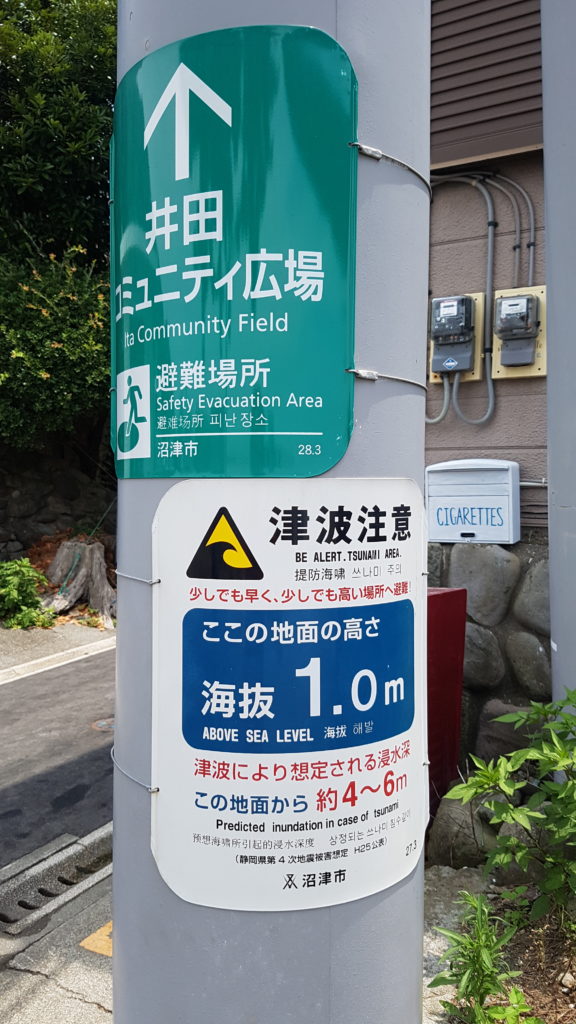Earthquakes, Volcanos, Tsunamis, Typhoons, Landslides – Japan is rich in natural desasters. Although being well prepared as a country, it’s also important for you to be prepared as an individual.
- have ready in case of emergency:
- water
- light
- hicking shoes
- cash
- extra battery for cell phone
- passport
- use the japanese meteriological agencie’s website for news and forecast:
- https://www.jma.go.jp/en/warn/
No need to have a dedicated bag all the time. If you keep above in the backpack that you use in your daily exploring, you will be fine.
Earthquake:
Make sure you have heavy shoes (hiking shoes) with you: Expect a lot of debris and glas on the ground. You don’t want to walk in flip flops.
Typhoon:
Typhoons are quite common in summer. Also heavy rain and thunderstorms pose some risks: Expect torential rain and related flooding as well as landslides. As a typhoon can be seen coming for long time: get yourself out of harms way. Use https://www.jma.go.jp/en/warn/ to predict it’s path. No need to hang around. Also beware of heavy wind on open ground that easily can topple a vehicle. Best is to get into a large city and wait it out. It’s definitely safer there than at the coast or countryside. Don’t travel during a typhoon. The danger of flash floods and landslides is real and can be deadly. Been there, seen that.
Volcanos:
Although they often don’t look like it, almost every mountain in Japan is a volcano. A lot of them active. Use the meterological agencie’s website to check on alert levels for volcanoes in your area. ttps://www.jma.go.jp/en/warn/
Mind that even Mout Fuji is active. Last breakout was in 1974.
Japan’s volcanoes are the best monitored in the world. Still there is a small risk of unexpected breakouts. Follow common sense and official warnings.
Official Notifications:
In case of emergency an Emergency SMS is sent to all mobile phones in the area with further information on the emergency and how to proceed/evacuate. Your phone will ring with an unfamilar sound, (I had the pleasure twice during a Typhoon) and the message will display on your screen. Fun fact: it’s usually all Japanese.
In case you have internet connection: Simply make a a screenshot, and load the picture into google translate – mark the japanese text on the picture in google translate and voila – the gist of the text should be understandable. It tends to be evacuation information and the closest evacuation center location.
If in doubt check with the locals, they will be able to direct you.
Tsunamis:

Close to the coast there is signs on almost every streetlight post on how high the area is, how high a tsunami would be in this area and where the next evacuation building or area is.
Call 110 for police.
Call 118 for coast guard.
Call 119 for ambulance or fire emergency.
Fukushima
They finally put signs in english up to prevent the curious tourist from getting out of the car in the no stopping zones. 🙄 Don’t be stupid. Don’t go there even if its said to be safe. Unless you want to glow in the dark or wake up with cancer.
Police 交番
So called Police Boxes are found in the countryside and are the local offices of police.
Japan is one of the lowest crime countries in the world. People literaly leave their cars unlocked and running while going in a store.
Call 110 in case of an police emergency.